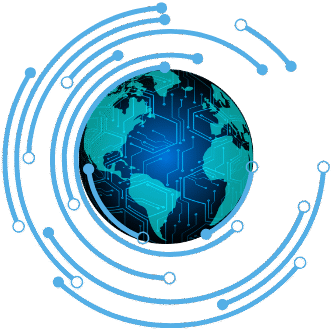An economy is an intricate system comprising consumers, businesses, and governments coordinating the production, consumption, and distribution of goods and services. This complex web of interaction aims to fulfill the needs and desires of individuals operating within its framework. An economy can manifest on various scales, from the entire nation down to a single family unit. Understanding economies in this context reveals much about the choices made by individuals and institutions and how these choices shape the overall landscape of society.
What Is an Economy?
At its core, an economy encompasses all activities related to the production and exchange of goods and services, playing a pivotal role in both local and global interactions. However, no two economies are identical; they vary based on their unique resources, cultural backgrounds, legal structures, historical contexts, and geographical characteristics. As a dynamic entity, economies continuously evolve, shaped by the decisions of participants driven by market transactions, collaborative efforts, or hierarchical governance structures.
Types of Economies
Economies can be broadly categorized into three types: market-based, command-based, and mixed. Though few countries exhibit a purely market-based or command-based economy today, most tend toward one model.
Market-Based Economies
Market-based economies are characterized by minimal government intervention, allowing individuals and businesses to engage in free exchange based on supply and demand. The United States serves as a prominent example; producers decide what goods to offer and determine pricing based largely on consumer demand. Supply and demand principles naturally regulate the economy, creating a balance that facilitates price adjustments to ensure market harmony.
As consumer demand fluctuates, so does production. If demand for a product rises, production typically ramps up, followed by a potential increase in price until consumer interest wanes. This self-regulating mechanism often leads to a balanced economy where resources shift toward areas of greater demand over time.
Command-Based Economies
In contrast, command-based economies operate under the controlling hand of a central government, which dictates production levels, pricing, and distribution. These economies endeavor to override the natural workings of supply and demand. In these systems, essential industries are government-owned, competition is limited or nonexistent, and prices are regulated.
Historical and contemporary examples of command-based economies include Cuba and North Korea, where the government’s authority outlines most economic activities. This model can be efficient in crisis scenarios but often stifles innovation and responsiveness to consumer needs.
Mixed Economies
Most modern economies can be classified as mixed economies, blending elements of market-based and command-based models. Even nations like the United States exhibit signs of mixed economic structures, where government intervention exists to regulate and influence production, as seen in case studies such as oil reserves management and interest rate adjustments.
China exemplifies this evolving classification. Previously a rigid command economy, it started to incorporate market principles in 1978, paving the way for a robust mixed economy that encourages private enterprise while maintaining governmental oversight.
Economic Indicators
Understanding economic health relies heavily on key indicators that provide insight into a nation’s economic performance. These indicators assist economists and policymakers in gauging growth, stability, and productivity.
Gross Domestic Product (GDP): GDP measures the total value of all finished goods and services produced within a nation over a specific time frame. In the third quarter of 2024, the U.S. GDP reached an impressive $29.37 trillion, reflecting its economic vitality.
Unemployment: The Bureau of Labor Statistics (BLS) tracks monthly reports on employment levels, average working hours, and earnings, which together inform the unemployment rate. End of 2024 statistics showed a 4.1% unemployment rate, helping gauge labor market health.
Inflation: Inflation tracks rising consumer prices, offering insight into purchasing power dynamics. The BLS measures inflation through various metrics, including the Consumer Price Index (CPI). By December 2024, inflation had risen by 2.9% year-over-year, highlighting ongoing economic conditions affecting everyday consumers.
- Balance of Trade: A nation’s balance of trade evaluates its exports relative to imports. A positive trade balance indicates a nation exports more than it imports, while a negative balance shows the opposite. These figures can reflect broader economic policies and international investment trends.
Studying Economies: Microeconomics vs. Macroeconomics
The academic discipline focusing on how economies function is known as economics, which branches into two principal areas: microeconomics and macroeconomics.
Microeconomics
Microeconomics investigates the behaviors of individuals and businesses, revealing how their activities impact the broader economic system. This field studies consumer choices, market dynamics, and value assignment, emphasizing psychological and marketing principles. For instance, shifts in consumer preferences significantly influence product pricing and availability.
Macroeconomics
Conversely, macroeconomics takes a broader view, analyzing overall economic performance. This branch of economics assesses comprehensive factors that shape the economic landscape, such as GDP trends, inflation rates, and employment statistics. Macroeconomic analysis is crucial for understanding national and global economic shifts, guiding policymakers in their decision-making.
The Historical Context of Economies
The term "economy" has its origins in the Greek word for household management, encapsulating the foundational role economies play in community structures. While early thoughts on economics can be traced to ancient Greek philosophers like Aristotle, modern economics solidified in 18th-century Europe, particularly through thinkers like Adam Smith, who illuminated the transition from barter systems to more sophisticated money-driven economies.
Over the centuries, technological advancements and heightened international trade have reshaped economic relationships, culminating in an interconnected global landscape. This evolution continues to unfold, especially as contemporary challenges arise from globalization, environmental concerns, and economic disparities.
The Bottom Line
Ultimately, an economy is a multifaceted system of production and consumption activities that influences resource allocation and social well-being. Each individual contributes to the economy, expecting an equitable share of the goods and services generated within it. Delving into the complexities of economies—through their types, indicators, and historical trajectories—allows us to navigate our economic realities more effectively, preparing for the challenges and opportunities the future may hold.

:max_bytes(150000):strip_icc()/economy.asp-ADD-SOURCE-9f40b23c92a743cc9c08fa5d17043fe2.jpg?ssl=1)







